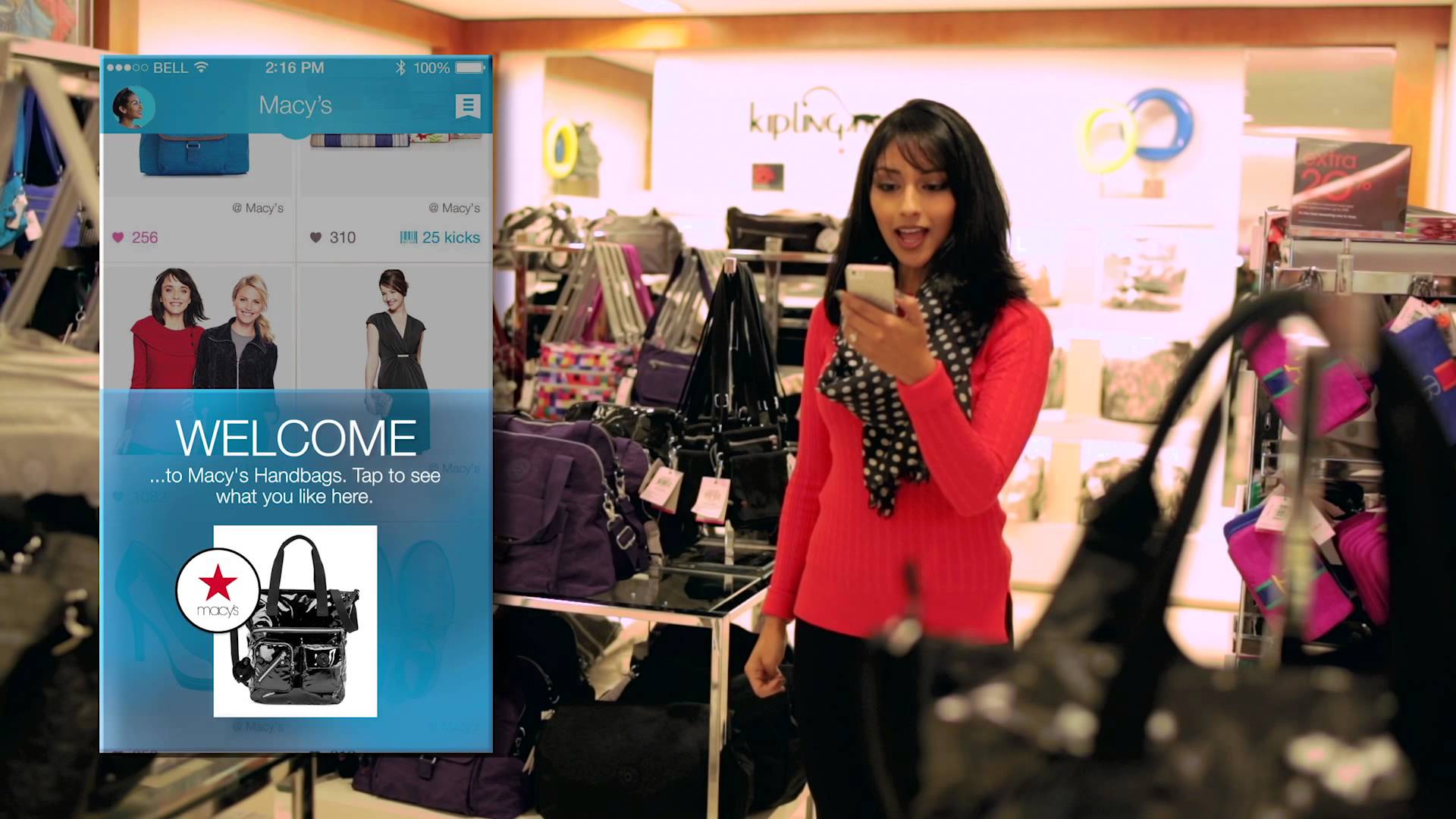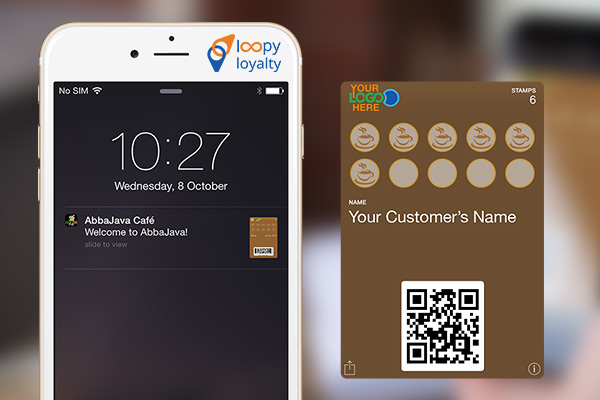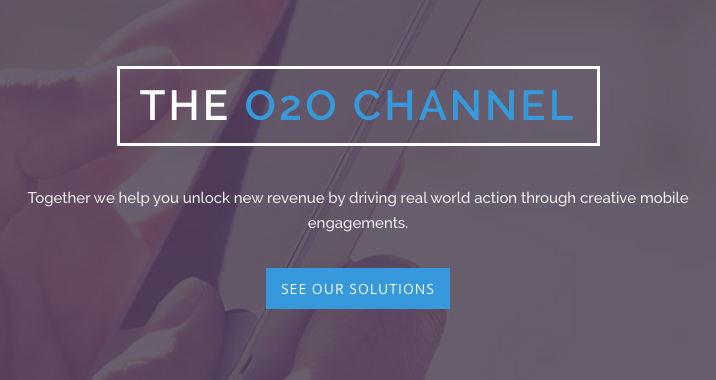Business is changing. Two separate worlds have begun to merge. While some businesses have tried to avoid it, the mergence of the online and offline (aka online 2 offline or O2O) world is inevitable. And if you’re prepared, O2O can be the best thing that has ever happened to your business. So what is it?
What Is O2O?
Let’s start with what you already know. O2O stands for online to offline. It connects the online digital world to the offline world (and vice versa) through the integration of internet-connected devices. Which is also more commonly know as IoT (Internet of Things). But is it a big deal? Yes. In fact, CISCO has predicted 50 Million connected devices by 2020.
50 Million.
Why Should You Care About O2O?
We spend our lives online. On mobile, tablet, desktop, connected TV and more. Mobile is no longer the second screen device. It’s THE screen. And O2O is all about driving customers from that online screen to offline experiences: in store, at events, and more. It’s all about utilising online behaviour to provoke an offline action in the real world.
In terms of commerce, O2O drives customers from the online marketplace (where they spend most of their time) to the offline world of brick-and-mortar stores. This can happen through digital coupons, loyalty cards and proximity marketing. Consumers can then be brought back into the online world through QR codes and mobile payment systems. Either way, consumers are beginning to merge the online and offline worlds into one.
No matter how much customers want to conduct everything on their phones, nothing beats physically touching and holding a product in your hand.
Why is O2O an opportunity for you and your business?
The problem with a pure online experience is that the consumer is not connected with the brand or product in a physical way. They are missing out on the emotional side that comes with the buying experience. While shopping online, a consumer misses out on the ability to feel and try out a product. This experience is very important to consumers, the success of the Apple Store is proof that customers are more than happy to shop offline for a better buying experience, but the persistence of the high-street and physical stores (Apple included) is because of the consumers need to experience a product before they make a purchase. But that’s not all.
The problem with a pure offline experience is that they can lack some of the major components consumers want in order to make a purchase. Since the rise of online shopping, consumers want to see more information about a product. They also want to see what other people are saying about it. Peer reviews or past customer opinions are paramount these days for a purchase decision. A lot of offline shopping experiences lack enough information about a product in-store and they don’t provide any reviews or opinions outside of the bias store staff. In fact, two in three shoppers who tried to find information within a store say they didn’t find what they needed, and 43% of them left frustrated. Which is what leads us to Online + Offline = O2O
Online to offline works because it combines the best of both worlds. Consumers get the physical/emotional connection with a brand or product, while also utilising the freedom, support, succinctness that the online experience can provide. They can be in a physical store, whilst checking out more information online. O2O also provides the ability to tailor your offers to your customers. And 85% say they’d be more likely to shop in places that offer personalized coupons and exclusive offers in-store.
The 2 Core components of O2O
There are 2 core components to the O2O value chain. Mobile wallet content and Proximity marketing. Or more to the point, Smartphones and Beacons.
1) Mobile Wallet and O2O
Mobile payments are an alternative form of payment. Rather than using cash, a credit card, or a check to make a purchase. Consumers can use their smartphone and their mobile wallet app. But it’s important to remember that they are not just for payments. Much like your leather wallet, Mobile Wallets can also store loyalty cards, coupons, tickets and more. Which is extremely important for O2O.
The major O2O mobile wallets are:
- Passbook (Apple Wallet) with Apple Pay
- Google Wallet with Android Pay
- Samsung Wallet with Samsung Pay
The mobile wallet is where the content such as digital coupons, loyalty cards, and event tickets are stored. Apple Pay, Android Pay, and Samsung Pay are the platform within the mobile wallet that allow consumers to make purchases with their smartphone.
The mobile wallet contains the same things you would find in your leather wallet just in digital form.
Digital coupons– Look like your typical paper coupon without the wrinkles and tears. These feature offers such as 20% off or buy one get one free.
Digital loyalty cards– Look like a punch card and rewards customers for repeat purchases. A typical loyalty offer is after ten purchases the customer will receive something for free. But you can customise this.
Digital membership cards– These come in many different forms. Some may be loyalty based such as a Starbucks MyRewards card and others may give customers access to something such as a gym membership.
Digital event tickets– These grant you entrance into concerts and sporting events. These have an advantage because they prevent fraudulent tickets and scalping.
Digital boarding passes– These display all the information about your upcoming travel plans. These can be instantly updated to show any delays or gate changes.

The advantage that mobile wallet content has over traditional is that it can be instantly updated and can communicate with its owner.
Push notifications– These arrive on the lock screen of the phone and can notify the customer of any changes to the pass or serve as a friendly reminder if a coupon is about to expire.
Push updates– These allow for the pass to be instantly updated and changed to show the most current information. If a flight gets delayed or a business has a new offer, they can change the pass to feature the most up to date information.
You can build mobile wallet content right here in mins.
2) Proximity Marketing and O2O
Beacons are Bluetooth low energy (LE) devices that broadcast a signal to nearby items. This technology enables smartphones, tablets and other connected devices to perform actions when in close proximity to any beacon that is broadcasting a signal. Take a look here
There are 3 main types of O2O beacon broadcast signals
iBeacon– This signal works with Apple iOS and transmits a universally unique identifier that is picked up by a compatible app or operating system.
AltBeacon– This supports beacon implementation in mobile platforms such as Android and Windows. Where iBeacon is the standard format for iOS devices, AltBeacon is the standard for non-iOS devices.
Eddystone– This is an open source, cross-platform Bluetooth Low Energy beacon that provides contextual information without needing an app.
Luckily for you and your business, you only need one Beacon to broadcast all three beacon signals. But only if you buy GemTots. Other beacons don’t have the power or capacity to do this.
The Physical Web
The Physical Web was created by Google to “unleash the core superpower of the web“, which is interaction on demand. With the Physical Web, people can walk up to any smart device – a vending machine, a poster, a toy, a bus stop, a rental car – and not have to download an app first to interact. It’s O2O without requiring an app or a previous connection to the customer. They can access your online experience while offline without you needing an app.
What is an O2O BLE beacon capable of?
Broadcast a link to a URL – Any phone with bluetooth enabled (as standard in iOS9 on Apple iPhone 6s an 6s plus) can receive a signal from a Beacon. Usually an app or mobile wallet content needs to interact with the signal, but with Physical Web beacons (Eddystone) you no longer need an app or content on the phone. Your phone can pick up the beacon signal all on its own.
Lock screen messages– Beacons can display lock screen messages that are able to greet customers at the door, provide a link for more information, or even pull up their digital loyalty card as they checkout.
Interact with an app– When programmed with an app, beacons can provide an experience that is in coordination with a persons location. A good example would be when someone is making their way through a museum, a beacon enabled app could pull up relevant information based on their location within the museum.
Learn how to get beacons for your business here.

The O2O Journey
Today’s customers are starting their shopping experience online. Whether it’s seeing an online advertisement or a recommendation from a friend on Facebook or receiving information from a bluetooth beacon. People are spending more time online now more than ever. In fact, they are spending almost 3 hours a day on their mobile devices, that’s more than TV. This is what makes the O2O journey so critical for businesses. People are no longer spending there time watching TV meaning that advertising on TV no longer makes sense.
O2O Option 1: Start with Beacons and Support with Mobile Wallet
The Physical Web allows for you to connect with a customer directly on their mobile device. Broadcasting via Eddystone, a business is able to provide a link to mobile wallet content (a pass), which can then be downloaded directly into the customers mobile wallet. All without the need for an app. Once the customer downloads the pass into their mobile wallet, they will need to go to the store in order to use it.
So for example, if a customer downloads a member pass into their phone, they would go to the store to activate it. Then they would become a member and return to the store for future purchases. Since their member card is in their mobile wallet, they could receive the latest offers and information directly on their lock screen. This eliminates the need to stand out in a customer’s email inbox or social feed.
O2O Option 2: Start with Mobile Wallet and Support with Beacons
Another way a consumer could receive a pass is online. It can be via a social media link, an email newsletter, or an online advertisement. With either the click of a button or a scan of a QR code, the pass can be added to their mobile wallet. Once in proximity to a store, the customer can be reminded of their coupon through a beacon enabled lock-screen message. And better yet, once they redeem their offer the pass can be transformed into a loyalty card. Enticing your customers to come back.
Don’t let your customers forget a coupon or loyalty card ever again with O2O.
Don’t lose everything you’ve gained when the customer is ready to buy. Place a beacon at the register and have your digital loyalty card or coupon be brought to the front of the customers screen without the push of any button. The customer can then pay with their preferred mobile payment platform, scan their digital loyalty card and be on their way. Happier than they ever could have been with an online shopping experience.

Seal the O2O deal and stay connected
Once the customer uses their mobile wallet content, you can still remain in contact. 72% of consumers who have used passes leave them in their phone. Allowing for you to send out new offers and enticing them to come back to your store. This gives you a direct line right to your customers. Better than any Facebook page or email list could provide.
The future of O2O and what it means for you
As business and marketing change, you must adapt with it. But instead of adapting, be the business that sets the tone of the change. Use the upcoming emergence of mobile wallet and O2O commerce to your advantage. Being an early adopter means that your business will stand out in the customers mind and it will help set the tone for the rest of your brand. And as the online and the offline world merge, consumers will merge with it. The lines will continue to blur and consumers will expect a top of the line experience. Luckily for you, setting up an O2O business strategy as never been easier. This is why O2O is the opportunity, the journey, and the future.
















